#ron tiner
Explore tagged Tumblr posts
Text





John Constantine, Hellblazer 29-33.
#dc comics#vertigo comics#john constantine hellblazer#john constantine#hellblazer#jamie delano#ron tiner#kevin walker#sean phillips#dick forman#steve pugh#dean motter#mark pennington#will read again
134 notes
·
View notes
Photo
Hellblazer #24 ‘The Family Man’ (1989) by Jamie Delano, Ron Tiner and Tom Ziuko. Edited by Karen Berger. Cover by Kent Williams.

#hellblazer#john constantine#dc comics#jamie delano#ron tiner#tom ziuko#karen berger#kent williams#comics
73 notes
·
View notes
Text
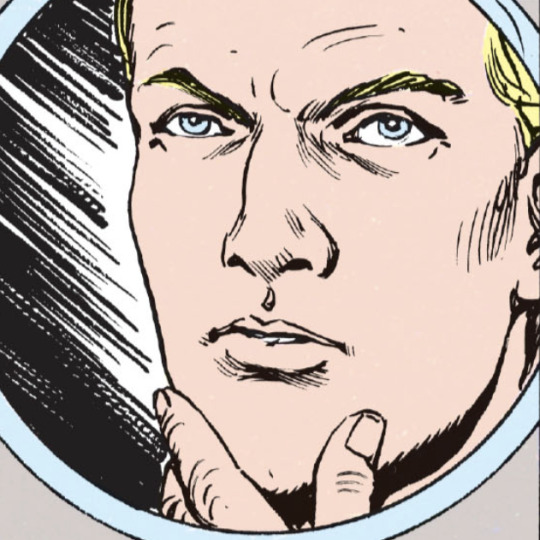
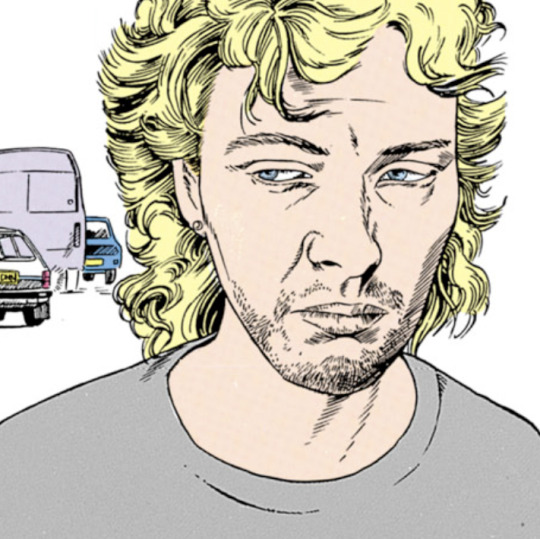
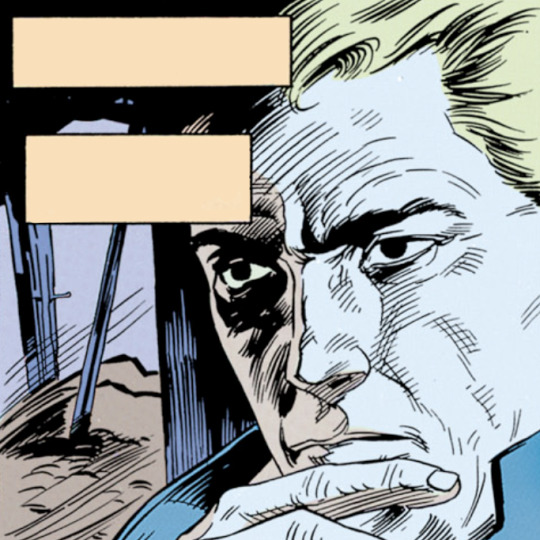
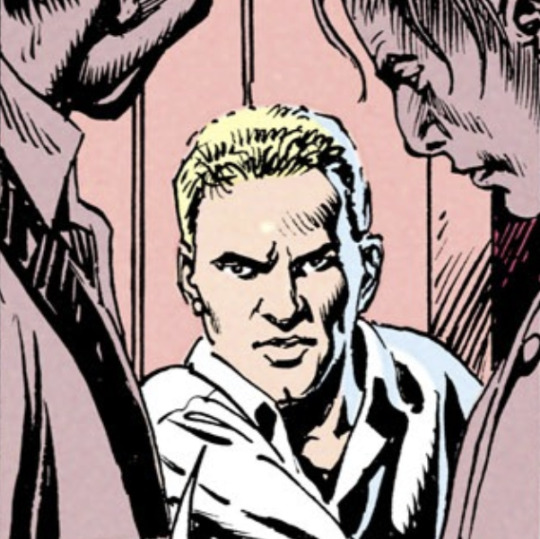
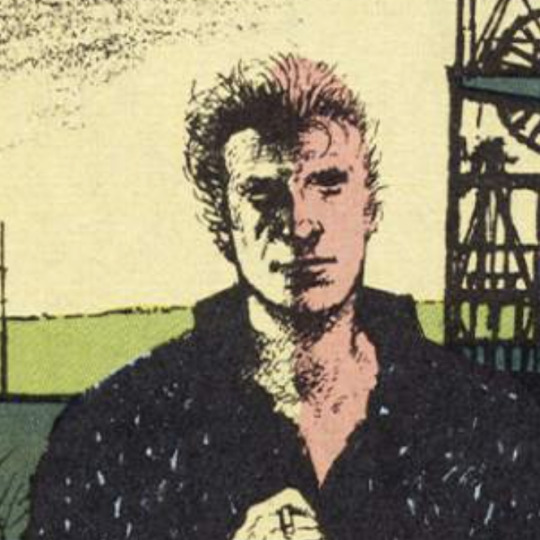
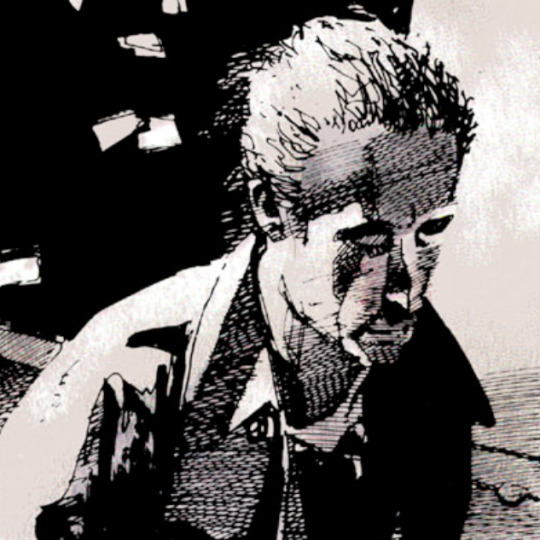
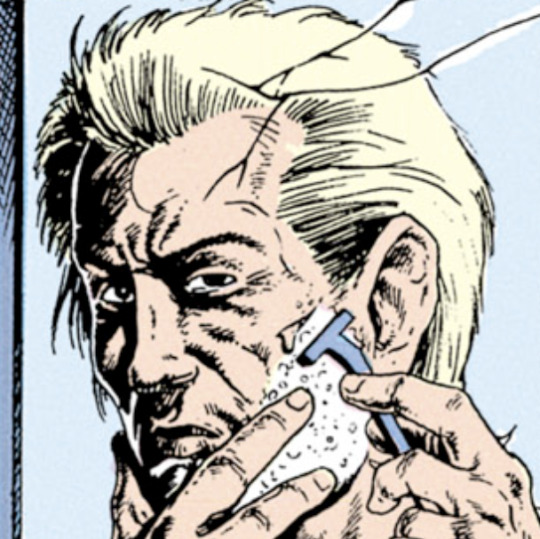
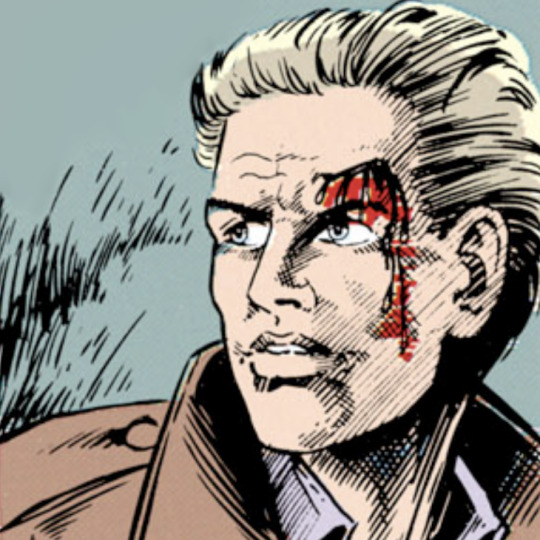
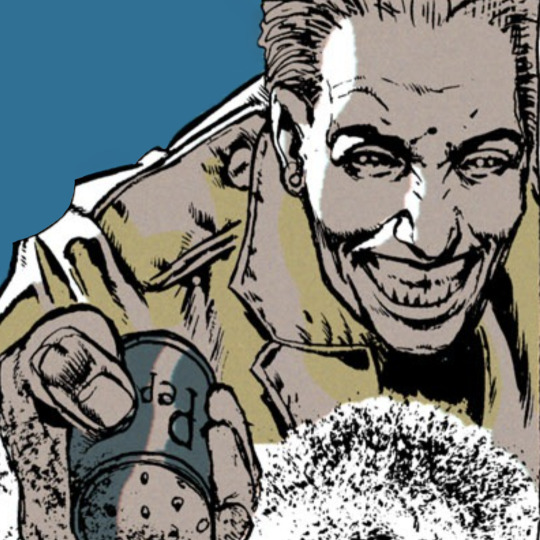

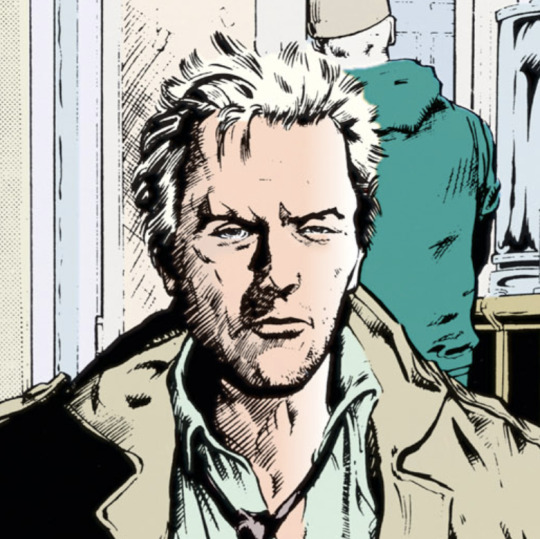
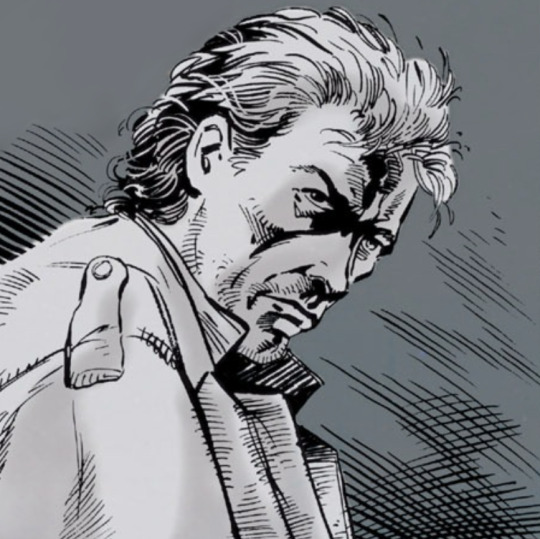

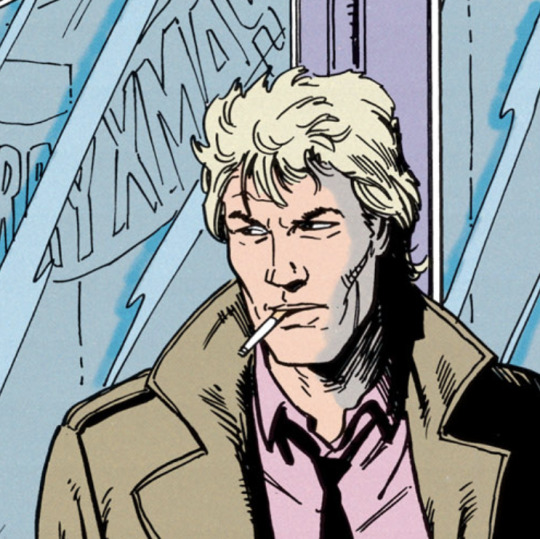
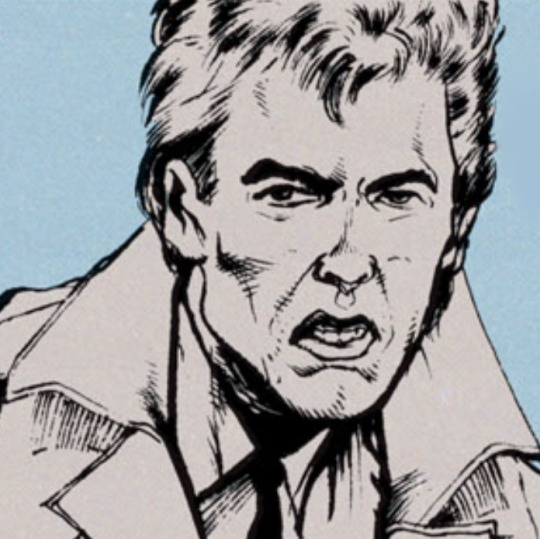
The Faces of John: Artist Appreciation | Issues 1-50
Artists:
From left to right
Row 1 [#9, 14, 17]
John Ridgway & Alfredo Alcala, 1988
Richard Piers Raynor & Mark Buckingham, undated (more than likely 1988)
Mark Hoffman, 1989
Row 2 [#19, 25, 27]
Mark Buckingham & Alfredo Alcala, 1989
David Lloyd, 1990
Dave McKean, 1990
Row 3 [#28, 30, 32]
Ron Tiner & Kevin Walker, 1990
Ron Tiner & Mark Buckingham, 1990
Steve Pugh, 1990
Row 4 [#34, 41, 46]
Sean Phillips, 1990
William Simpson & Mark Pennington, 1991
William Simpson, Mark Pennington, Mark McKenna, Kim DeMulder & Stan Woch, 1991
Row 5 [#47, 49, 50]
William Simpson & Stan Woch, 1991
Steven Dillon, 1992
William Simpson, 1992
#hellblazer#john constantine#dc#comics#foj1#he looks so different sometimes I'm like who da heck is thaT#I wanted to show how different he looks from artist to artist and their diff art styles bc I thought that would be interesting
155 notes
·
View notes
Text
had an excuse to list a few physical books I love for furthering your art practice
so it seemed worthwhile to crosspost in case anyone else was interested!
For just getting the painting-studies-from-life fire lit under you, I recommend Hawthorne on Painting : https://store.doverpublications.com/0486318745.html -- it's a collection of lecture notes from the cape cod school of art, and there's no pictures, and that seems so counter-intuitive, but the sheer passion for light and colour that shines through honestly is really inspiring. The core concept I took from it is that a painting study doesn't require expert knowledge of anatomy, perspective, structure etc; just a passion for seeing colour, and then putting the right colour down in the right shaped mark in the right place; a simple and infinitely difficult skill to learn and a great way to get out of your own head when the subject matter feels overwhelming. It's a very affordable little pocket-sized book and you can likely track down a used version as it's been a classic for a long time.
For more visual instruction, another classic-and-affordable book I have used to the point of disrepair is Jack Hamm's Drawing Scenery: Landscapes and Seascapes : https://www.penguinrandomhouse.ca/books/352897/drawing-scenery-seascapes-and-landscapes-by-jack-hamm/9780399508066 -- it starts with the bare bones of composition, but it goes into amazing detail on all sorts of elements of scenery from trees to skies to lighting and more. I keep his spread of Types of Clouds bookmarked for easy reference!
And for the fun of discovery and clear, direct instruction, I've really liked the Think When You Draw books : http://theetheringtonbrothers.blogspot.com/ -- while this isn't my personal visual style, they have such great, punchy, memorable instruction on such a huge, wide array of subjects, it's been a great tool to get me over the "okay but cars/bikes/horses/spaceships are HARD" etc threshold!
And finally for figure drawing, the book that really unlocked drawing people for me was Ron Tiner's Figure Drawing Without a Model : https://www.scribd.com/doc/103174602/Ron-Tiner-Figure-Drawing-Without-a-Model -- he covers a few different mental models of the figure to help build it from the ground up in your mind, and he connects these models very clearly to real life anatomy, drawing from life, and character design. Again, not a visual style I personally pursue, but immensely useful concepts that I still use today, 24 or so years after I first read this book, whenever I draw without a reference.
And I always recommend hitting up a used bookshop or two for some collections of art that inspires you -- even if it isn't your chosen medium, or subject matter, or style, if it gets your brain running then why not spend some time with it and see what you can get out of the book? Personally I always come back to my collections of Frank Frazetta, Rodney Matthews, Edward Hopper, Gian Lorenzo Bernini, and Caravaggio artwork, and most of those were random used bookshop discoveries.
Hope there's something interesting amongst this list for you, and please reply/repost with your favs as well!
16 notes
·
View notes
Text
Coming Soon: Judge Dredd Megazine 445, lost droids interviewed!
Karl Stock has tracked down some more former 2000AD creators for the latest Megazine, on sale this week, featuring a dramatic Judge Anderson cover by Rachael Stott
The latest Judge Dredd Megazine is in comic shops and newsagents from Wednesday 15th June, featuring a dramatic Judge Anderson cover by Rachael Stott. The cover is the perfect promotion to mark the return of Judge Anderson to the anthology title, as writer Maura McHugh and artist Lee Carter pick up on the aftermath of the story “Be Psi-ing You”, published in 2000AD Prog 2250, and finds Cass and…

View On WordPress
#downthetubes News#Judge Anderson#Judge Dredd#Judge Dredd Megazine#Karl Stock#Rachael Stott#Ron Tiner#SF Comics
3 notes
·
View notes
Text
adding to this list:
Figure Drawing Without A Model, by Ron Tiner, seems to be a great book for beginner artists wanting to figure out how to draw people. Extensive sections on anatomy, gesture Drawing, etc, and the copy I have is bound in a way that let's it lay completely flat for you so you're not having to struggle to keep the book open while referring to it!
the Morpho: Anatomy For Artists series by Michel Lauricella, from the publisher Rockynook, are petite, focused volumes made with a binding method that, again, lets it lay flat while referring to it. They're slender and practically pocket sized, making it easy to take them with you on the go, and full of valuable advice and examples for different aspects of drawing one might struggle with, including one initial primer volumes, and several individual sequel volumes on:
"Fat and skin folds"
"Skeleton and bone reference points"
"Joint forms and muscular functions
"Simplified Forms"
"Hands and feet" (aka bane of an artist's existence)
One on drawing big muscled bodies that I haven't got my hands on yet (great for those looking to create like, superhero or shounen type stuff)
One on drawing animals (it's on my wishlist)
One on drawing clothing folds (I have this one but it's in my bag and I don't feel like digging it out)
George G. Bridgman also authored "The Human Machine: The anatomical structure and mechanism of the human body" which is about exactly what it sounds like; I personally prefer the Morpho books for ease of use (especially if you're more of a visual person than a verbal one), both for their more convenient physical format and for the clarity of their illustrations, and would recommend both "Joint forms and muscular functions " and "Skeleton and bone reference points " for covering similar subjects...but! this one is still useful for covering how the human body is constructed and moves, has a whole section on hands and arms, covers the topic from a different kind of perspective (literally, the mechanics of a body, including comparing it to mechanical equivalents like hinges and levers) that for some people might "click" more, and Bridgman has a looser, sketchier style to his drawings here than Lauricella does over in Morpho, which might be appealing for some as well.
I have not gotten to go through it much yet, but I own a copy of a book that comes highly recommended by ART INSTRUCTORS apparently, for understanding facial expressions: "The Artist's Complete Giide to Facial Expression" by Gary Faigin, is not like, some purely visual reference book, its meant to teach you how human facial muscles ACTUALLY MOVE to show emotional expressions. It's a lot more technical, but incredibly specific in ways that an artist will quickly find are going to be useful: for example, I just open to a random section (pages 92 and 93) and found its a detailed, and I do mean DETAILED section discussing mouths.
I'm really not kidfing on how detailed, specific, AND technical this book gets: Page 92 is "The Folds Around The Mouth" , discussing the impact of aging on that area over time, with two illustrations provided of the same person's mouth at age 20 and age 60; page 93 kicks off "The Closed Mouth: Five Muscles" starting in on "Levator Labii Superioris: The Sneering Muscle". It is illustrated with two drawings showing where the respective muscles and sections are on the cheeks, Mouth, and around the nose, on both a skull and a face who is not a skull. So I think maybe you get what I mean here. It has the feel of a textbook more than anything else but i could see it being invaluable if read in full. The human face is such a tricky thing to draw without it looking wonky!
I've also been playing around in a new app I got on my android phone, pretty sure it was free, just called "Sketchbook", that I'm already really pretty happy with; I'm still a beginner mulyself when it comes to digital art, but so far my impression is it's intuitive and has a good selection of brushes and effects, easy enough color selection, in depth ways to tweak things like opacity and "flow" and brush size etc when using brushes, and it also lets you work in layers; it's overall pretty fun and easy to use, while letting me do some things that I'd find next to impossible or highly difficult to do with traditional drawing and painting methods and allowing easy undo/redo and what looks to be a lot of customization of the interface if one wanted to fiddle with it. So far I'd rec, especially for beginning digital artists who want to dip their toes in it.
Can't afford art school?
After seeing post like this 👇

And this gem 👇
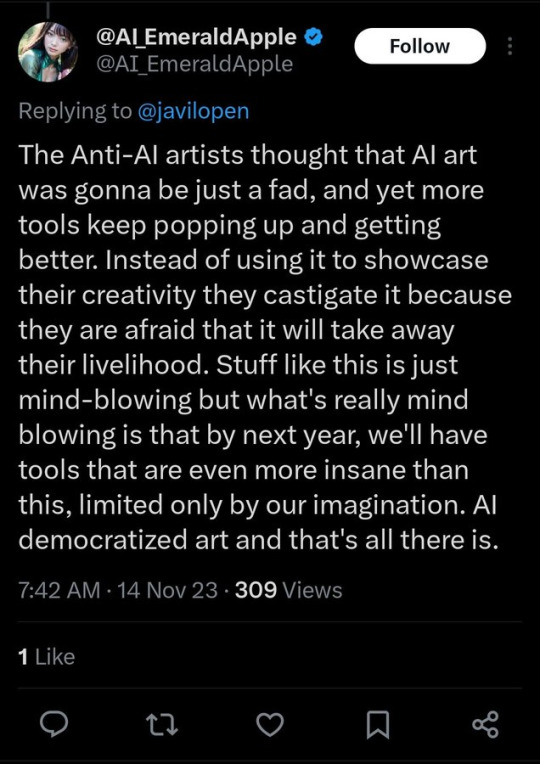
As well as countless of others from the AI generator community. Just talking about how "inaccessible art" is, I decided why not show how wrong these guys are while also helping anyone who actually wants to learn.
Here is the first one ART TEACHERS! There are plenty online and in places like youtube.
���Here is my list:
Proko (Free)
Marc Brunet (Free but he does have other classes for a cheap price. Use to work for Blizzard)
Aaron Rutten (free)
BoroCG (free)
Jesse J. Jones (free, talks about animating)
Jesus Conde (free)
Mohammed Agbadi (free, he gives some advice in some videos and talks about art)
Ross Draws (free, he does have other classes for a good price)
SamDoesArts (free, gives good advice and critiques)
Drawfee Show (free, they do give some good advice and great inspiration)
The Art of Aaron Blaise ( useful tips for digital art and animation. Was an animator for Disney)
Bobby Chiu ( useful tips and interviews with artist who are in the industry or making a living as artist)
Second part BOOKS, I have collected some books that have helped me and might help others.
📚Here is my list:
The "how to draw manga" series produced by Graphic-sha. These are for manga artist but they give great advice and information.
"Creating characters with personality" by Tom Bancroft. A great book that can help not just people who draw cartoons but also realistic ones. As it helps you with facial ques and how to make a character interesting.
"Albinus on anatomy" by Robert Beverly Hale and Terence Coyle. Great book to help someone learn basic anatomy.
"Artistic Anatomy" by Dr. Paul Richer and Robert Beverly Hale. A good book if you want to go further in-depth with anatomy.
"Directing the story" by Francis Glebas. A good book if you want to Story board or make comics.
"Animal Anatomy for Artists" by Eliot Goldfinger. A good book for if you want to draw animals or creatures.
"Constructive Anatomy: with almost 500 illustrations" by George B. Bridgman. A great book to help you block out shadows in your figures and see them in a more 3 diamantine way.
"Dynamic Anatomy: Revised and expand" by Burne Hogarth. A book that shows how to block out shapes and easily understand what you are looking out. When it comes to human subjects.
"An Atlas of animal anatomy for artist" by W. Ellenberger and H. Dittrich and H. Baum. This is another good one for people who want to draw animals or creatures.
Etherington Brothers, they make books and have a free blog with art tips.
As for Supplies, I recommend starting out cheap, buying Pencils and art paper at dollar tree or 5 below. For digital art, I recommend not starting with a screen art drawing tablet as they are more expensive.
For the Best art Tablet I recommend either Xp-pen, Bamboo or Huion. Some can range from about 40$ to the thousands.
💻As for art programs here is a list of Free to pay.
Clip Studio paint ( you can choose to pay once or sub and get updates)
Procreate ( pay once for $9.99)
Blender (for 3D modules/sculpting, ect Free)
PaintTool SAI (pay but has a 31 day free trail)
Krita (Free)
mypaint (free)
FireAlpaca (free)
Libresprite (free, for pixel art)
Those are the ones I can recall.
So do with this information as you will but as you can tell there are ways to learn how to become an artist, without breaking the bank. The only thing that might be stopping YOU from using any of these things, is YOU.
I have made time to learn to draw and many artist have too. Either in-between working two jobs or taking care of your family and a job or regular school and chores. YOU just have to take the time or use some time management, it really doesn't take long to practice for like an hour or less. YOU also don't have to do it every day, just once or three times a week is fine.
Hope this was helpful and have a great day.
83K notes
·
View notes
Text
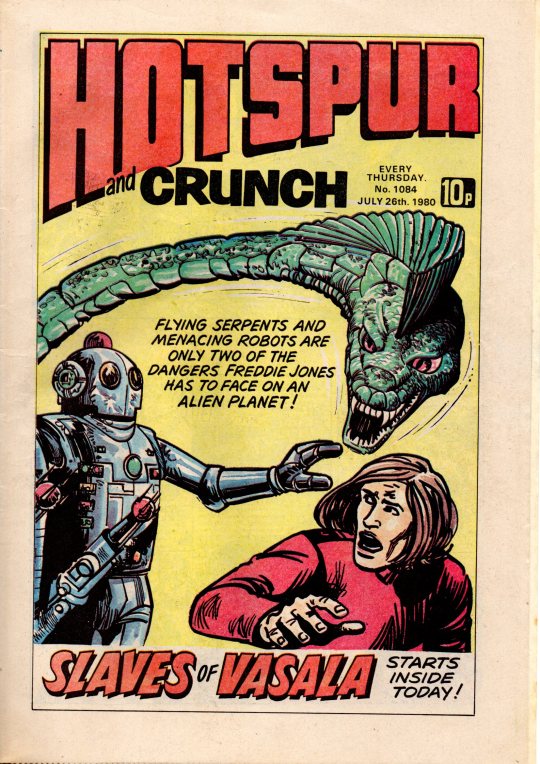
Hotspur and Crunch No. 1084, dated dated 26 July 1980. Slaves of Vasala cover by Ron Tiner. The cover was made up of a number of different interior panels that appeared in later issues. One part came from the issue dated 23 August 1980.
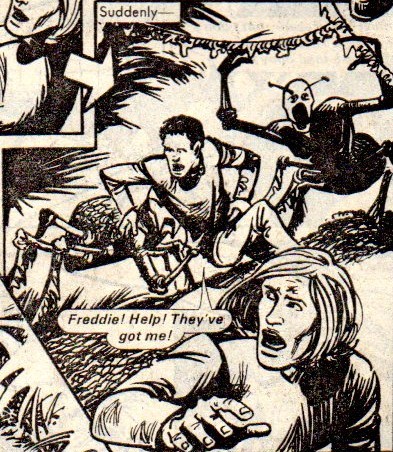
Another part came from the issue dated 30 August 1980.

Also inside was news of a new strip 'Flood' starting the following week. I think the two main characters had appeared in an earlier strip, possibly in The Crunch, so will have to do a bit of research on that.

D.C. Thomson & Co. Ltd.
#hotspur#hotspur and crunch#the crunch#ron tiner#dc thomson#flood#slaves of vasala#1980#the hotspur#26jul
13 notes
·
View notes
Text

This is some dark shit, unlike John’s white shirt and white jeans.
0 notes
Text



Been having a fun time getting back into one of my favorite things to do :) anatomy practice sketching
#my art#anatomy#sketches#from: figure drawing without a model - ron tiner#got that book from my last reblog btw#pencil
2 notes
·
View notes
Note
Hi!! Your art is so beautiful and I love how detailed you design each character like they're all so unique and cute! I wanted to start getting into digital art and I've mostly only done portraits from the neck up. How did you learn to draw bodies and people in movement? (I have a new level of appreciation for comic and anime artists IT IS SO HARD) thank you!!
Heyyy thank you so so much omgg!! And yeaH I feel you so much comic & anime artists are just something else. For me the most useful things for learning to draw bodies etc (which,, I still have to learn so much about tbh) were 1. copy the work of artists I liked as an exercise/warmup and 2. learn old school textbook anatomy, like bones, tendons, muscle groups etc, and how they work (this was SO BORING but also very useful kfsfj)
there are also some very good books about figure drawing, I haven't read them all yet but I'm gonna give you a few titles
"Figure drawings for dummies" by Kensuke Okabayashi
"Drawing the living figure" by Joseph Sheppard
"Figure drawings without a model" by Ron Tiner
"Force - character design from life drawing" by Mike Mattesi (this one is very useful for movement and force lines in action poses)
"Art of drawing the human body" by Sterling I hope this helps <333
#the books are all easily piratable btw#I got them all from library genesis#if u have trouble just shoot me a dm and I'll give u the links#ask
85 notes
·
View notes
Photo
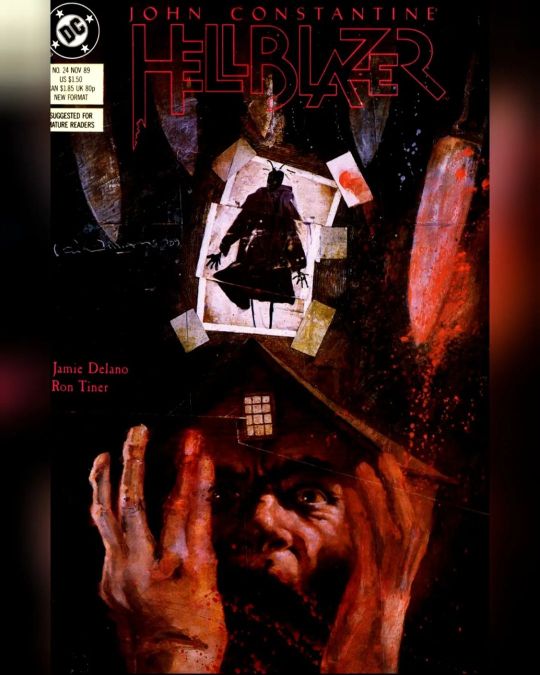
Hellblazer vol 1 24 (1989) . The Family Man . Written by Jamie Delano Art by Ron Tiner Colors by Tom Ziuko Lettered by Tom Frame Edited Karen Berger and Art Young Cover by Kent Williams . Constantine stayed at a friend's house... . #constantine #dccomics #dc #rontiner #kentwilliams #jamiedelano https://www.instagram.com/p/ChCwLWuMyt7/?igshid=NGJjMDIxMWI=
2 notes
·
View notes
Text






John Constantine, Hellblazer 23-28.
#dc comics#vertigo comics#john constantine hellblazer#john constantine#hellblazer#jamie delano#ron tiner#grant morrison#david lloyd#dave mckean#will read again
54 notes
·
View notes
Text
The Artists of Delano’s Era (Issues #1-40)
Comic books wouldn’t be...well, comic books without the art. Indeed, the artists are instrumental in their creation. The art can easily make or break a story regardless of good the writer is. Thankfully, the artists of this era more than helped support Delano’s masterful writing and helped bring these incredibly influential chapters to life. They were instrumental in establishing the look of John’s character and world, with their influence seen throughout the series in one way or another. While over the years artists have each had their own takes on John, the art here has proven to be iconic. I think it’s important to remember that more people than just Delano had a hand in creating Hellblazer in this era, but here I want to just highlight the artists. Still, remember to appreciate the colorists, letterers, and of course the editor who all played integral roles in this series creation, ya’ll!
John Ridgway
Bryan Talbot
Alfredo Acala
Brett Ewins
Jim McCarthy
Richard Piers Rayner
Mark Buckingham
Mike Hoffman
Ron Tiner
David Lloyd
Dave McKean
Kevin Walker
Sean Phillips
Dick Forman
Steve Pugh
Dean Motter
Mark Pennington
I don't know who the cover artists are, or if the covers are done by the artists for the issue, so if someone knows feel free to let me know!
2 notes
·
View notes
Photo

Hellblazer (V1) #24 by Jamie Delano and Ron Tiner
51 notes
·
View notes
Text
In Review: Fantastic Adventures
In Review: Fantastic Adventures

Published by Hibernia Edited by David McDonald | Designed by Richard Pearce Out: Now Review by Peter Duncan
In his introduction to the latest addition of the Hibernia Comics ‘Comic Archives’ series, editor and publisher David McDonald muses over the amount of quality material commissioned for UK comics that has never been published. Over the next 90 pages of Fantastic Adventures, he presents us…
View On WordPress
#David Lloyd#David McDonald#Derek Lord#Fantastic Adventure#Fantastic Adventures#Grant Morrison#Hibernia Comics#John M. Burns#Richard Pearce#Ron Tiner#Steve Whitaker#Terra Nova
1 note
·
View note
Text

Hotspur and Crunch No. 1083, dated 19 July 1980. 'The Doom Wardens' cover by Enrique Alcatena. As was quite common the art was re-used from the interior story.

That story came to an end this week and will be replaced by another sci-fi strip 'Slaves of Vasala' next issue (with artwork, I think, by Ron TIner).

DC Thomson.
#hotspur#hotspur and crunch#1980#slaves of vasala#ron tiner#the doom wardens#enrique alcatena#dct#19jul
7 notes
·
View notes